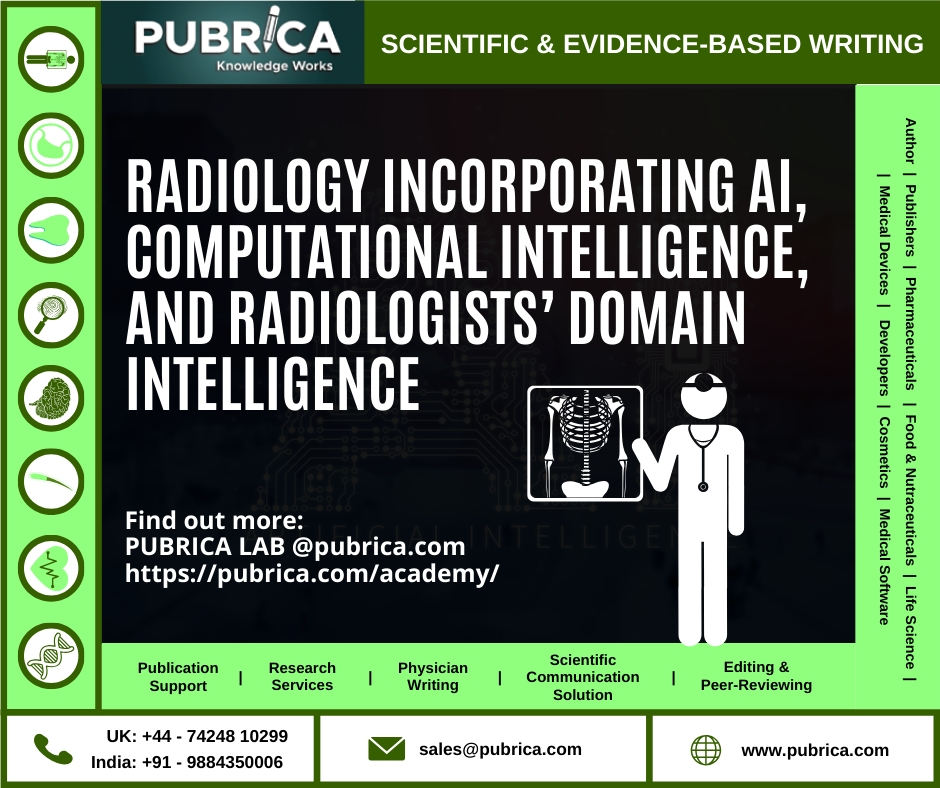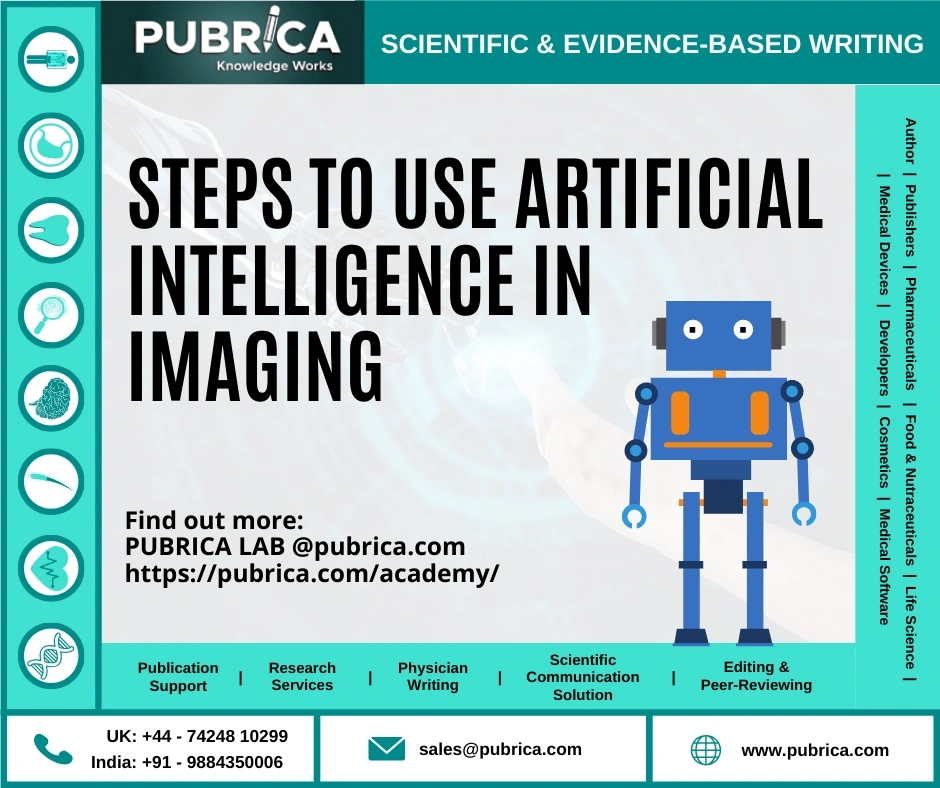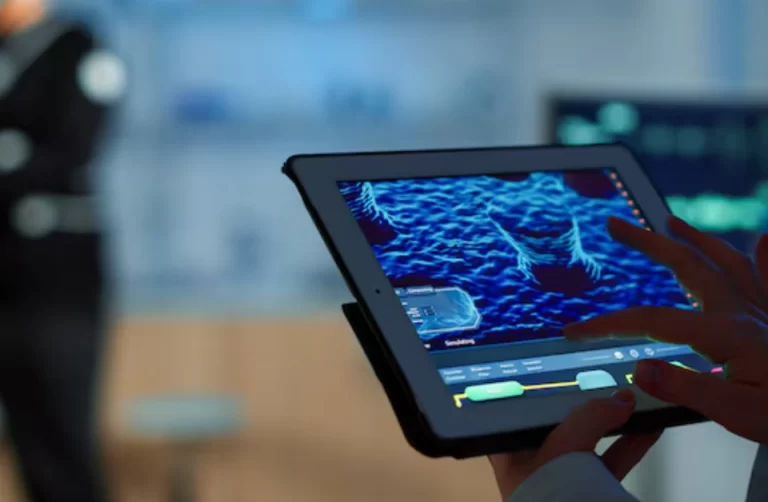
Radiology Incorporating AI, Computational Intelligence, And Radiologists’ Domain Intelligence
February 18, 2020
Global Research For Infections That Affect Nervous Systems – A Good Start For Your Research Proposal Writing
February 27, 2020AI has its own challenges in its implementation in the medical field. Many diseases are detected by researchers who publish advanced algorithms but how to get these findings to the clinic? At the outset, these algorithms should be fused into software packages which are user-friendly and an approval by a regulatory board has to be obtained. But the most important factor in the implementation of these packages or usage of these software is the integration of workflow in a clinic (Ranschaert, Morozov, & Algra, 2019). However, Radiologists are not very enthusiastic in adding another software solution to their already existing packages and this proves to be a challenge in the integration and implementation of artificial intelligence in imaging studies.
To integrate AI into imaging, there are different levels to achieve it and each level comes with its own pros and cons. Integrating Artificial Intelligence for imaging right from manual or minimal to fully integrating it is a challenge by itself.
Minimal or manual integration
In order to access the results of artificial intelligence findings by the radiologists, he has the option of installing software onto to a workstation. But if there is no further steps taken to integrate it, then this acts just like another software which has been installed in your computer or workstation . It is just like visiting a website, installing the software after downloading it. The results of the AI have to be either manually entered to the reports which is prone to human errors or kept as an appendix at the end of the report. Definitely not user-friendly.
Completely automatic
As the name suggest, a completely automatic integration of AI is very easy and effective way of implementing. Here, the results are returned back to the RIS (Radiology information system) or PACS as a report where there is no option to validate or edit. This is quite user-friendly, results are automatically displayed without much intervention on the part of the radiologist.
This can be used where the AI results are being used as an appendix to the radiology report or if the results are considered as just another input to your final results. But with the option of editing not available, it proves to be a downside. However, these results can be forwarded to referring clinicians to consider them as additional information to aid in the process of diagnosis. As there is no human intervention and no manual checks done by the Radiologist, showing outstanding and correct results becomes mandatory for the AI software.

Platform Integration
The integration of several software programs is not a very task and it is very time consuming. Hiring the services of companies who take it on themselves to standardise the whole process of integration is a great option. By managing all the algorithms of AI with their own platform and then integrating this into the hospital network makes things easier and efficient. Here, the radiologists have an option to access different algorithms from several AI vendors via a single platform and the vendors can integrate the software just once onto the hospital network and run their business.
Integration by tagging with other vendors
The workflow of Radiology includes several software solutions. RIS, EMR software, voice recognition software, PACS viewers, etc are some of the solutions in the workflow (Morra, Delsanto, & Correale, 2019). Once AI is completely integrated with other solutions, then there will be more standardization in the field of radiology.
Finally, if the AI software gets integrated with multiple departments like CIS or EMR, there will be error free and instant communication from the hospital to the referring clinicians with no inconsistency in the final report whatsoever.
Understanding the exact requirements for both quantitative and qualitative analyses for the deployment of AI in clinical practices either cloud-based or local is essential in the usage of AI algorithms in the setting of an actual practice by any clinician or hospital. Every stakeholder should ensure that the algorithms are non-biased, accurate, safe, and this should be done by working along with different government agencies, IT personnel, platform companies.
Conclusion
Even though there are plenty of barriers to cross, the usage of Artificial Intelligence in the field of imaging is taking prominence by the day. The medical imaging fraternity which includes radiologists, institutions of academic importance, etc should participate in the development of standardization of Artificial Intelligence so that there is consistency in clinical practices. In order to create models that monitor and validate AI algorithms in imaging and to minimize bias, industry developers, researchers, clinicians and government agencies should collaborate with each other. This will ensure that the technology is secure, safe, effective and efficient.
Even though radiologists find it a little uneasy to embrace the concept of AI in their profession, facing challenges is not new to radiologists as since the inception of the concept of radiology, they have been facing challenges efficiently always.
References
Morra, L., Delsanto, S., & Correale, L. (2019). Artificial Intelligence in Medical Imaging: From Theory to Clinical Practice. CRC Press. Retrieved from https://books.google.co.in/books?id=IX3ADwAAQBAJ
Ranschaert, E. R., Morozov, S., & Algra, P. R. (2019). Artificial Intelligence in Medical Imaging: Opportunities, Applications and Risks. Springer International Publishing. Retrieved from




